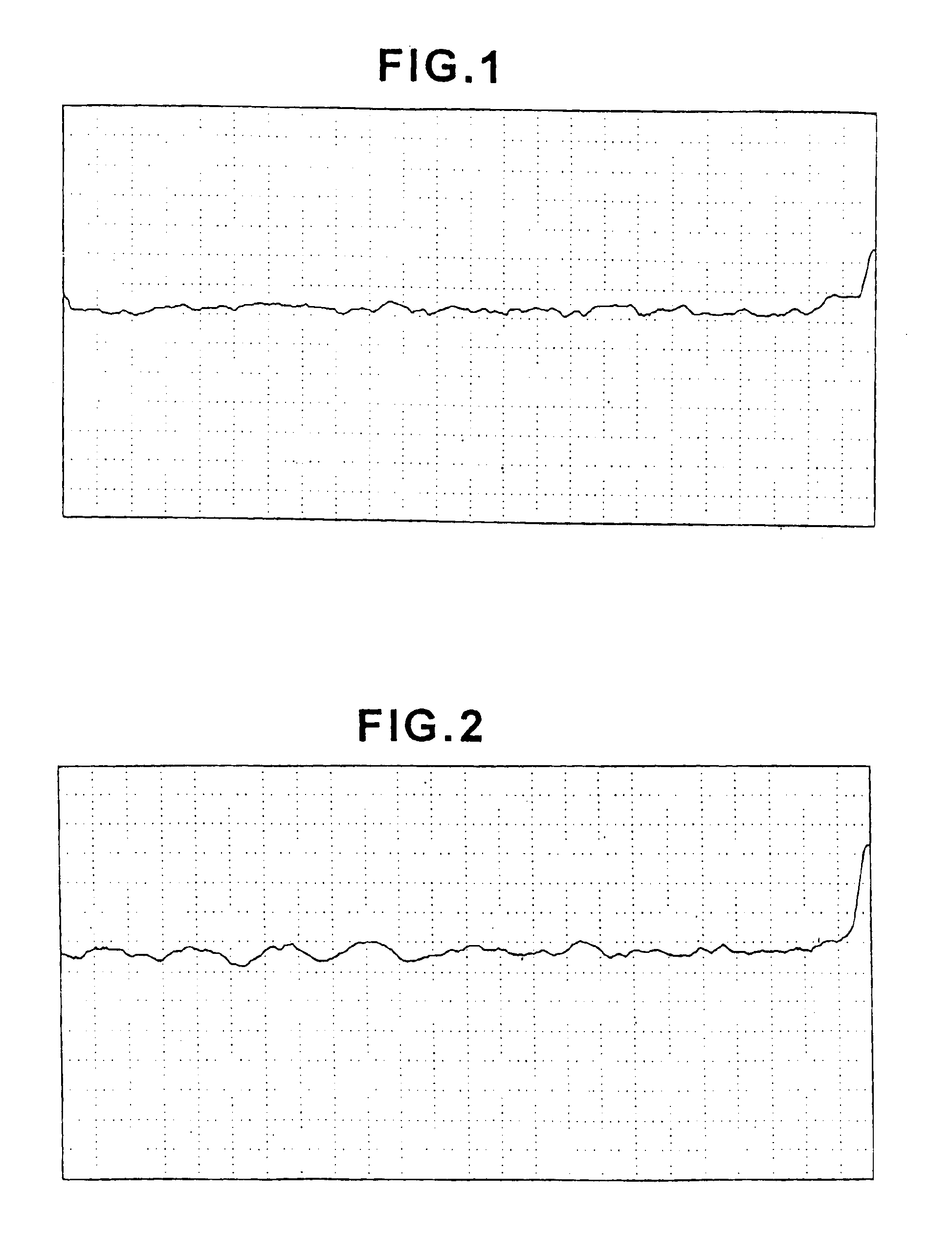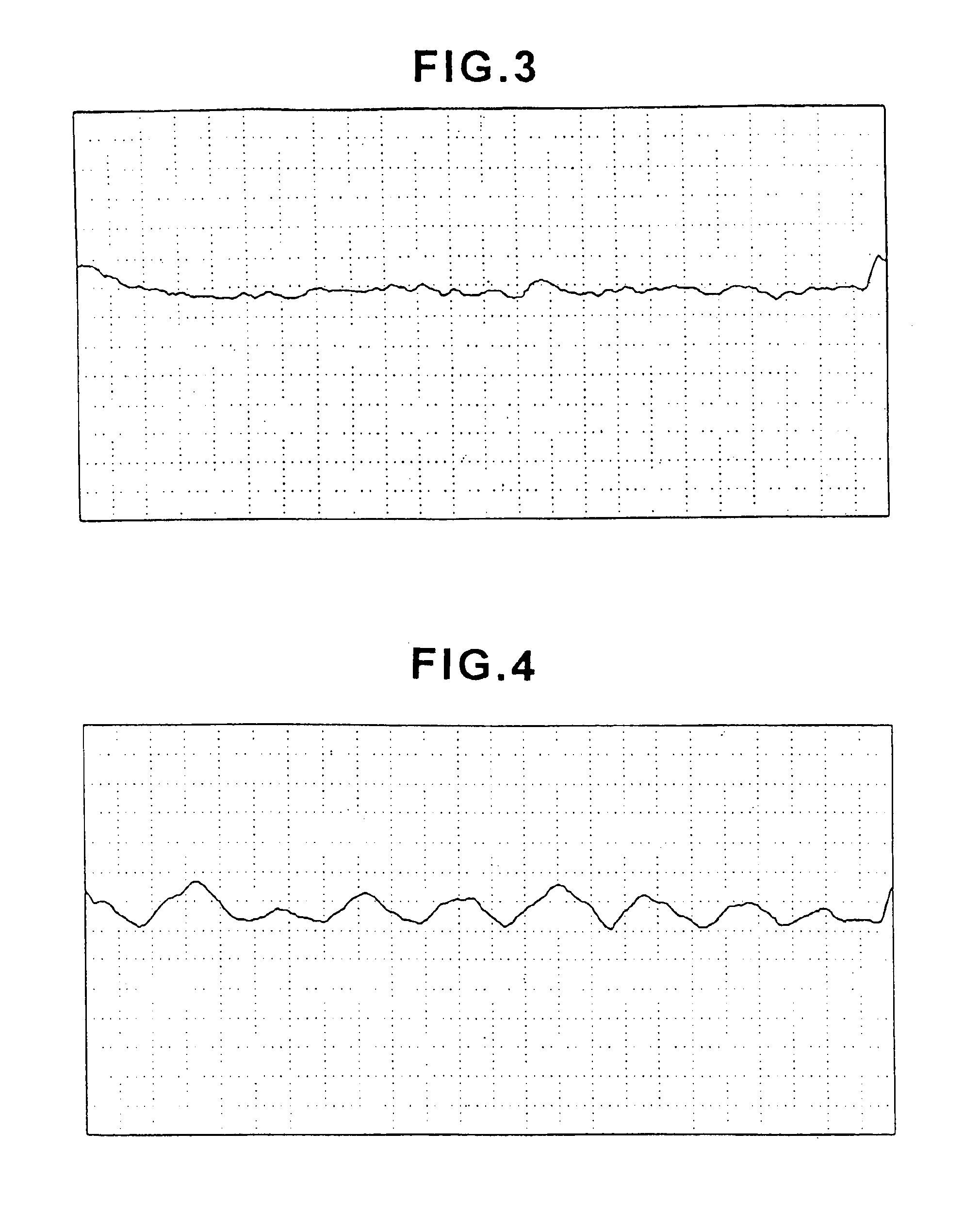Coated paper for printing and manufacturing method thereof
a technology of coating paper and printing method, applied in cellulosic plastic layered products, instruments, transportation and packaging, etc., can solve the problems of paper not being provided to the market, and many quality defects that are not produced in sheet-fed offset printing. to achieve the effect of reducing the fluting in web-offset printing
- Summary
- Abstract
- Description
- Claims
- Application Information
AI Technical Summary
Benefits of technology
Problems solved by technology
Method used
Image
Examples
example 1
[0101]To a pulp slurry consisting of LBKP 70 parts (freeness 410 ml / csf) and NBKP 30 parts (freeness 480 ml / csf), precipitated calcium carbonate was added as a filler to obtain the paper ash of 10. Then, as a sizing agent to the pulp slurry, 0.04 parts of AKD sizing agent (trade name: SKS-293F / Arakawa Chemicals Co., Ltd.) and 0.5 parts of aluminum sulfate were added, respectively. The slurry was then passed through an on-top paper machine to obtain a paper web. The antifoaming agent (trade name: SN defoamer 777 / SUNNOPCE Ltd.) of 0.05% to PVA in terms of solid matter and solution of PVA (trade name: PVA-124, saponification degree:98.5 mol %, polymerization degree: 2,400 / KURARAY Co. Ltd.), which was prepared to have 6% concentration, was applied to both sides of this paper web by a bar coater and after dried, a base paper to make the coated paper was obtained. The viscosity of the PVA aqueous solution at 20° C. was 450 mPa·s and the coating amount of the PVA solution was 2.8 g / m2 per ...
example 2
[0105]Example 1 was repeated to produce a sheet of coated paper except that the coating amount of the PVA solution per side surface after being dried was changed to 1.5 g / m2. The thermal shrinkage force (R) and the evaluation of the fluting in web-offset printing of the coated paper thus obtained are shown in Table 1.
example 3
[0106]Example 1 was repeated to produce a sheet of coated paper except that the PVA solution used in Example 1 was replaced by the liquid mixture consisting of 50 parts kaolin (trade name: UW-90 / Engelhard Corporation) and 50 parts PVA (trade name: PVA 124 / KURARAY Co., Ltd.) having a concentration of 11% solid matter. The thermal shrinkage force (R) and the evaluation of the fluting in web-offset printing of the coated paper thus obtained are shown in Table 1.
PUM
| Property | Measurement | Unit |
|---|---|---|
| temperature | aaaaa | aaaaa |
| length | aaaaa | aaaaa |
| width | aaaaa | aaaaa |
Abstract
Description
Claims
Application Information
 Login to View More
Login to View More - R&D
- Intellectual Property
- Life Sciences
- Materials
- Tech Scout
- Unparalleled Data Quality
- Higher Quality Content
- 60% Fewer Hallucinations
Browse by: Latest US Patents, China's latest patents, Technical Efficacy Thesaurus, Application Domain, Technology Topic, Popular Technical Reports.
© 2025 PatSnap. All rights reserved.Legal|Privacy policy|Modern Slavery Act Transparency Statement|Sitemap|About US| Contact US: help@patsnap.com



